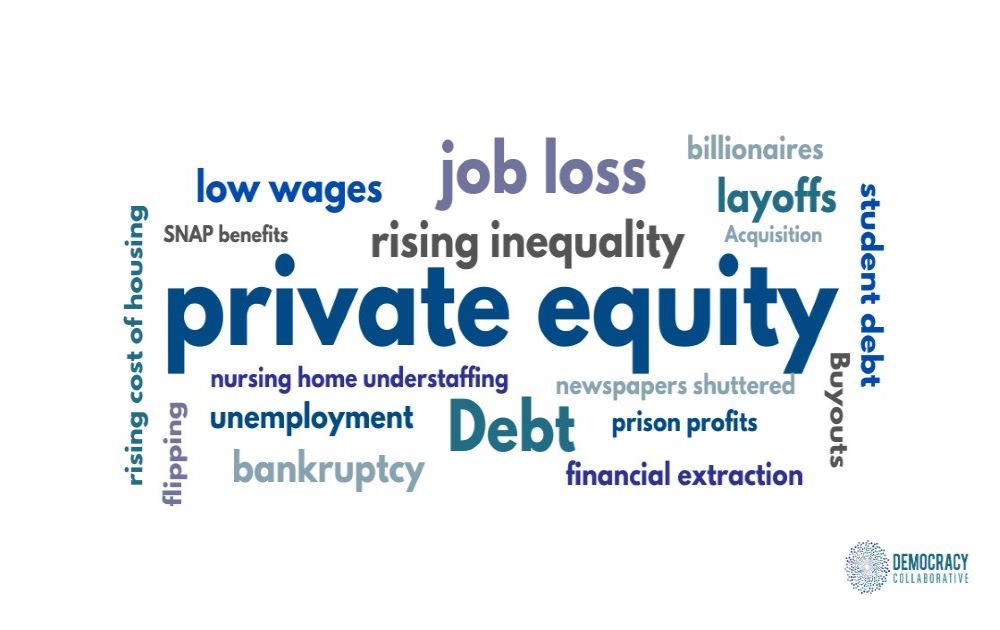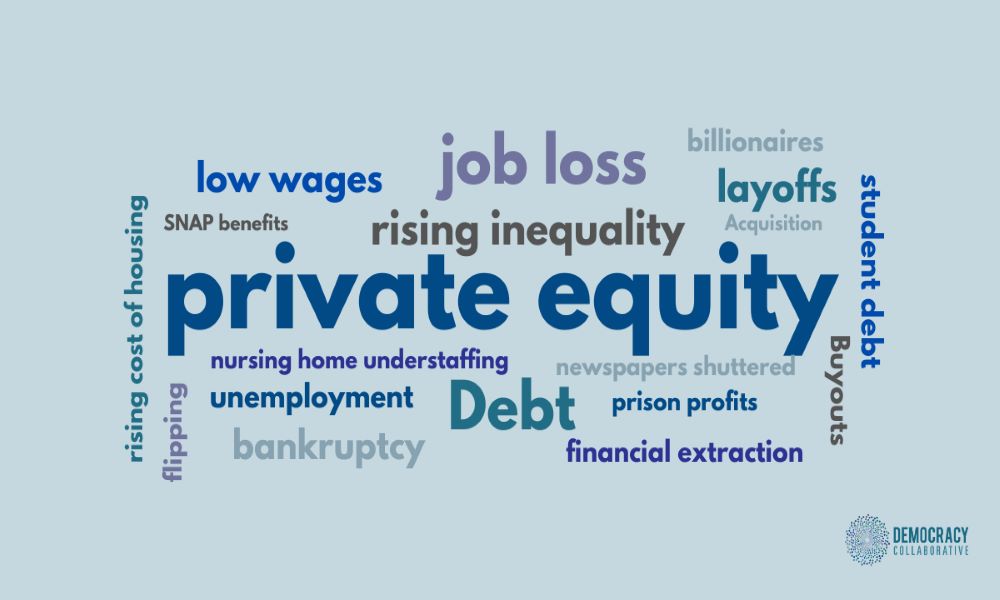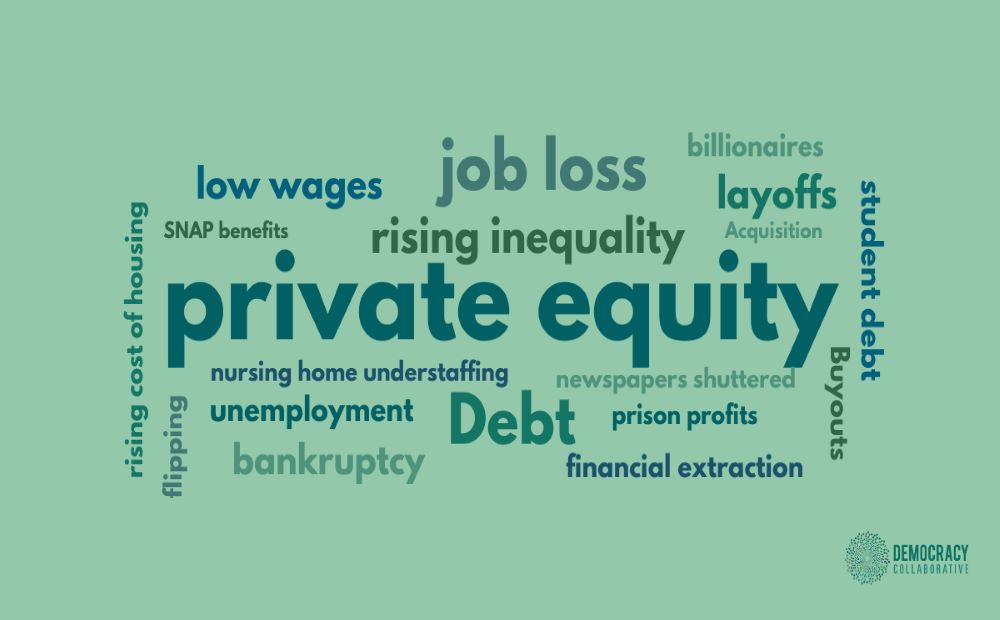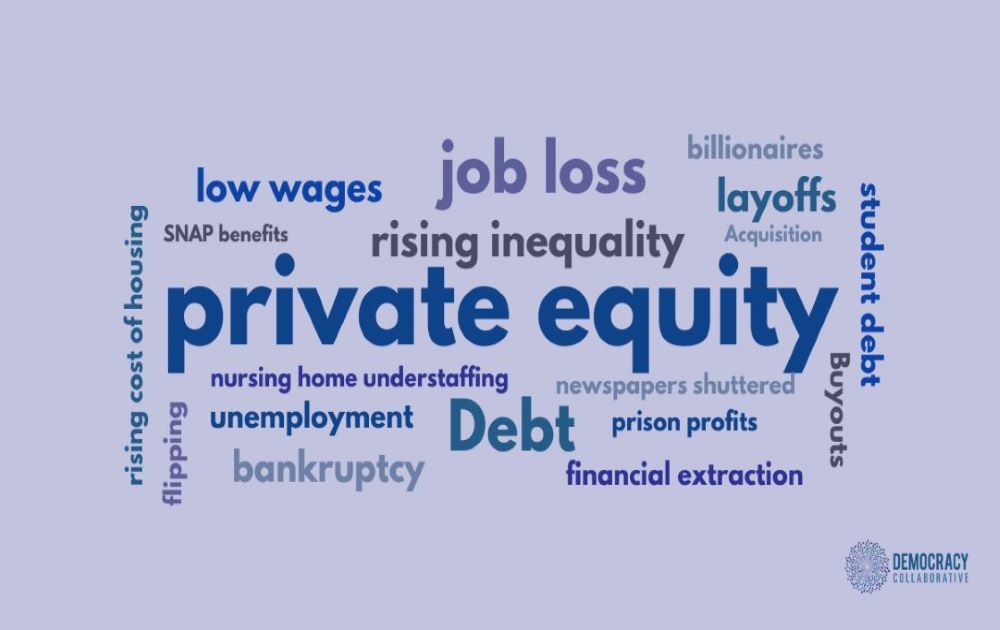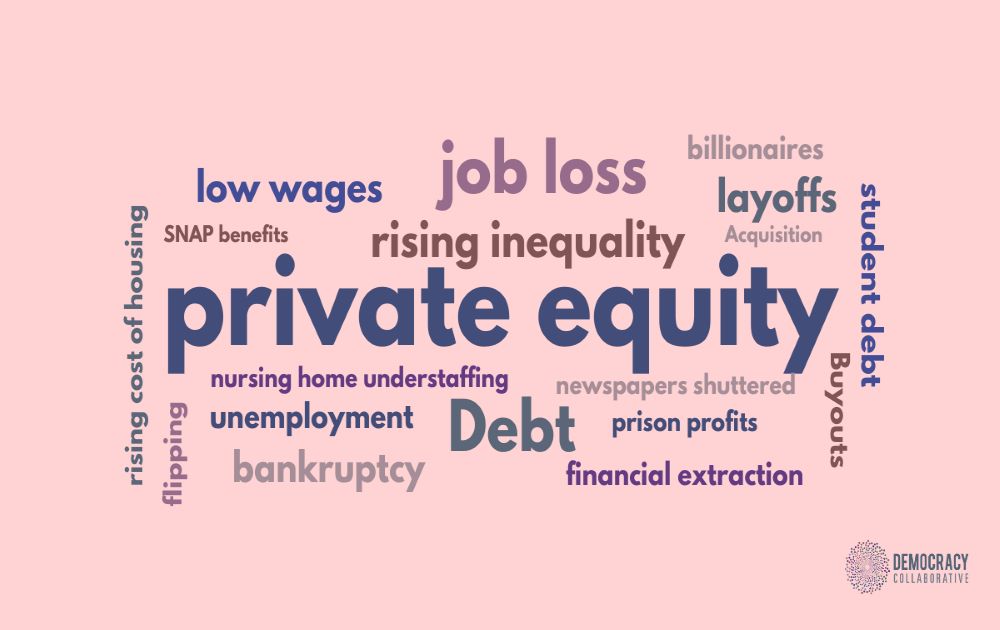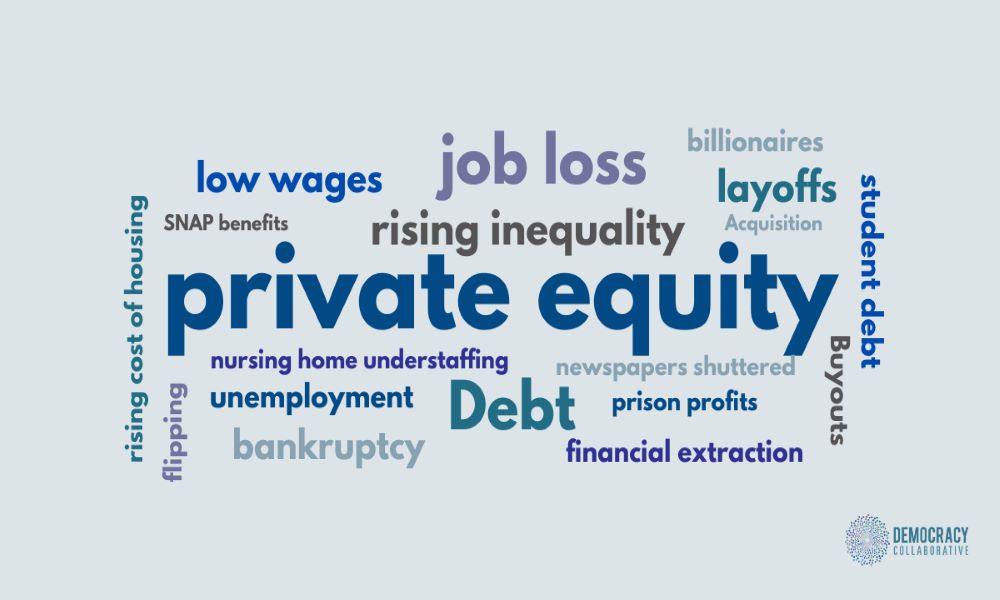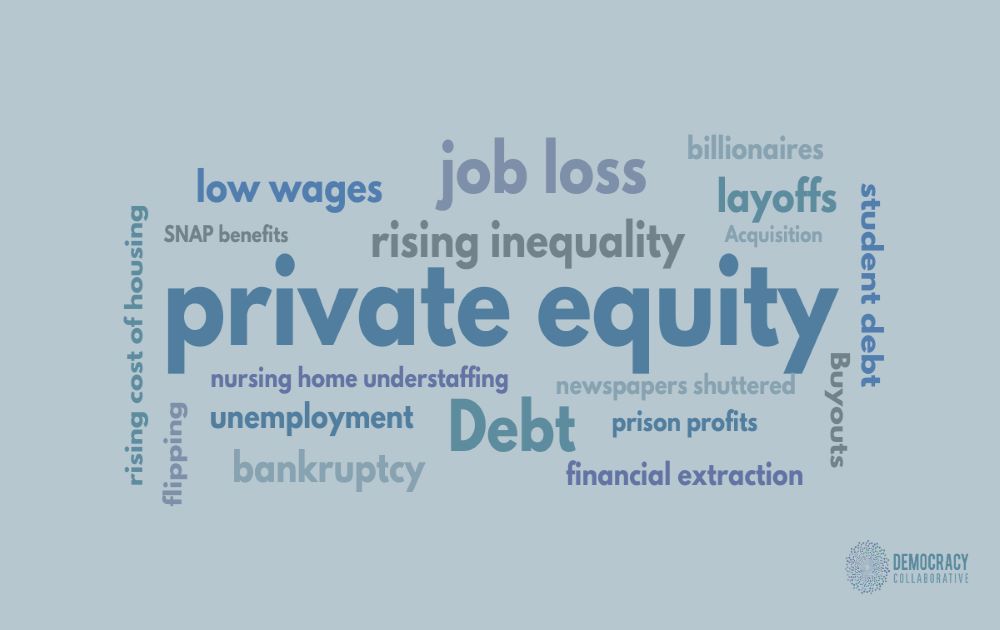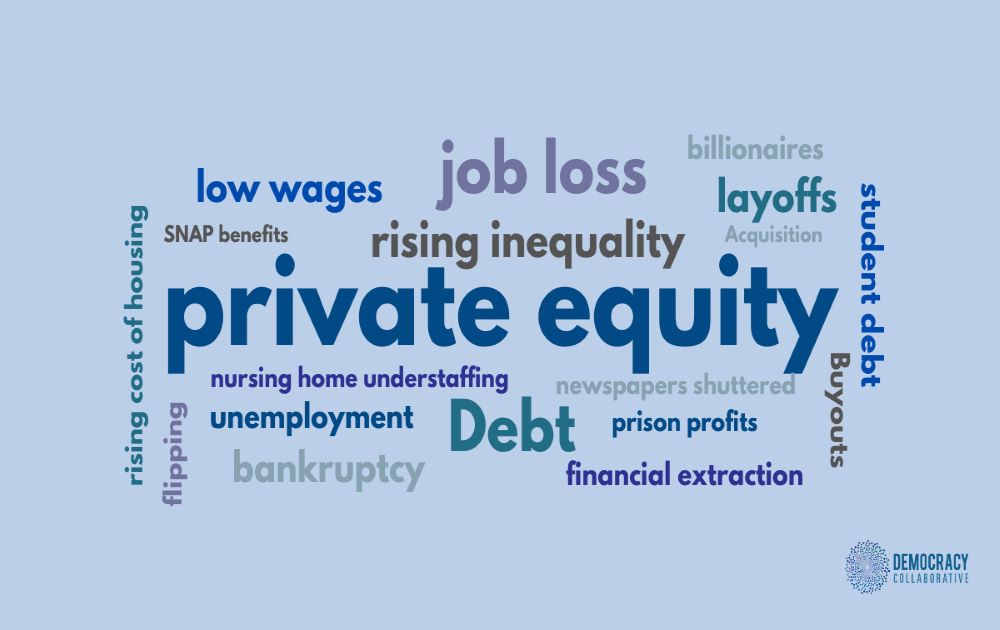Part 2: If equity shares increase workers’ productivity, who benefits?
In this post, Marjorie Kelly and Karen Kahn continue their discussion of Ownership Works , and the concerns this private equity initiative raises for the field. Part 3 of “Are the Barbarians at the Gate,” will be posted on May 25.
Private equity general partners (GPs) are among the most highly compensated executives in the world. They have long used equity to align the interests of the management team with those of investors. Now they are expanding that model to include all workers, an acknowledgement of ubiquitous data showing that sharing equity with workers drives productivity. But one has to ask, in this model of “employee ownership,” who benefits most from this rising productivity?
In this model of “employee ownership,” who benefits most from this rising productivity?
Delilah Rothenberg, founder of the Predistribution Initiative, once worked in private equity and now studies its impact on our economy. She noted, “As long as wealth for fund managers grows exponentially greater than for workers, the wealth gap will continue to grow.”
Rothenberg emphasized that investors in these funds—like foundations and pension funds—need to look not simply at the absolute wealth gained by employees, but at the ratio of that to executive wealth. In KKR’s “2020 ESG Impact and Citizenship Report,” the PE fund said it had awarded more than $500 million in equity to more than 20,000 non-management employees. That is an average of $25,000 per worker. That asset may grow, as is the case in KKR’s latest exit from C.H.I. Overhead Doors. In the $3 billion deal, KKR earned 10 times its initial investment. The average payout for the 800 workers was about $175,000, or 5 percent of the total.
That’s certainly significant for the workers who received this generous bonus, but as Rothenberg points out, KKR’s top four executives in 2017 (the most recent year for which full compensation figures were reported for KKR executives by Bloomberg) enjoyed combined compensation of $670 million, an average of $167 million each in a single year. It’s noteworthy that four of the top ten slots for highest paid executives in the country that year were occupied by this one firm. It’s also noteworthy that while the payouts for C.H.I. workers are very large, they impact just 800 workers. KKR, by contrast, has some 50,000 workers at BrightSpring Health making wages as low as $8 per hour.
When contrasted with U.S. personal income of more than $21 trillion in 2021, creating $20 billion in worker wealth “is both a large amount and a tiny amount,” says Gil Friend, CEO of strategy consultancy Natural Logic, Inc, and founder of “private equity for good” fund Critical Path Capital. “It’s much more than workers get now, but “given KKR’s capability, I would have welcomed something bolder,” he added. “It reminds me of Samuel Johnson’s comment about a dog walking on its hind legs: ‘It is not done well; but you are surprised to find it done at all.’ “
Read our entire series on the impact of private equity on the employee ownership field, including our interview with Delilah Rothenberg.
Is Private Equity about to Co-opt Employee Ownership?
What the launch of the nonprofit Ownership Works could mean to the employee ownership movement.
Continue Reading Is Private Equity about to Co-opt Employee Ownership?
Are the Barbarians at the Gate?
Part 1: Can private equity be trusted to prioritize worker benefit?
Ian MacFarlane: Can we call this “employee ownership”?
It seems they’re doing what big capital does: take over a concept like employee ownership and make it their own in order to make more money.
Continue Reading Ian MacFarlane: Can we call this “employee ownership”?
Jim Bonham: Enter the Dragon?
Making modest investments to a non-profit in order to take shelter from the negative public sentiment resulting from the massive and growing wealth inequality in America is a cheap way to diffuse heat.
Delilah Rothenberg: A step in the right direction, but only one piece of the puzzle
As long as the wealth of GPs grows exponentially faster than that of everyone else, economic inequality will continue to grow.
Continue Reading Delilah Rothenberg: A step in the right direction, but only one piece of the puzzle
Ian Mohler: A Piece of the Pie Is Better than No Slice at All
Offering equity to workers is a good thing, and we can argue later about what share of the pie is most appropriate.
Continue Reading Ian Mohler: A Piece of the Pie Is Better than No Slice at All
Are the Barbarians at the Gate?
Part 3: Is this real employee ownership?
Joseph Cureton: Success is more than an increase in financial value
I see this as an opening, an opportunity for the idea of worker ownership to become more mainstream.
Continue Reading Joseph Cureton: Success is more than an increase in financial value
Andrea Armeni: An Opportunity to Spur Deep Structural Change
Ownership Works can be a conversation starter and spur conversations about who is creating the value and who should capture it.
Continue Reading Andrea Armeni: An Opportunity to Spur Deep Structural Change
Andrea Dehlendorf: Working with Private Equity to Make Jobs Better
Americans need to better understand the role of Wall Street and private equity in our economy.
Continue Reading Andrea Dehlendorf: Working with Private Equity to Make Jobs Better
Will Equity Shares Improve Outcomes for Workers?
This seems like a time of messy growth for employee ownership.
Continue Reading Will Equity Shares Improve Outcomes for Workers?
To follow Employee Ownership News, subscribe to our newsletter.
